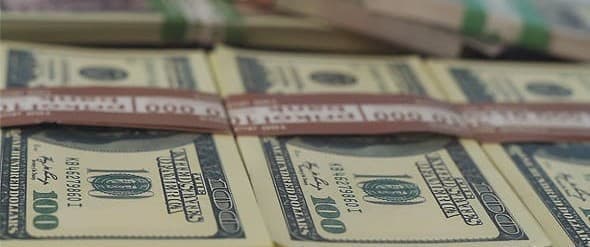The Trump administration has taken dozens of actions during the Covid-19 pandemic to benefit the oil and gas industry, such as opening new lands for leasing, watering down environmental protections, cutting royalty rates on federal lands, among a long list of other actions.
But one of the more consequential interventions came from the Federal Reserve. In March, when financial markets went into a tailspin, the U.S. Congress authorized the Federal Reserve to inject trillions of dollars into financial markets. That included the capacity to lend directly to individual sectors and companies in the real economy, along with indirect purchasing of bonds to specific sectors.
In other words, the Fed was authorized to buy tens of billions of dollars in corporate bonds in the energy industry, in addition to direct lending to companies themselves.
The problem is that the Fed may be propping up an industry that was struggling before the market downturn.
More than 200 North American oil and gas companies have gone bankrupt since 2015. The U.S. shale industry, in particular, has lost $300 billion and “peaked without ever making money,” according to a recent report.
These problems existed before the Covid-19 pandemic. Of the 158 sub-industries defined by the Global Industry Classification Standards (GISC), “oil and gas drilling” saw the worst decline in credit ratings over the last five years (through the end of 2019, before the onset of the pandemic), plunging by 44 percent, according to a new report from Influence Map. Companies in other sectors performed much better – healthcare companies saw an average decline in credit quality by only 6 percent, while communications improved by 4 percent, and real estate by 3 percent.
Because the energy sector has been on a declining trend for years, it is much harder to justify Fed intervention based on the logic that this is a temporary setback related to the coronavirus, as is the case for other sectors.
The extraordinary intervention “represents support for parts of the economy which may have been in secular decline prior to the pandemic,” the Influence Map warned. “If this is the case, it raises questions surrounding moral hazard and distortion of free markets as well as the taking on of excessive risk by the Federal Reserve on behalf of US taxpayers.” Related: Suppliers Fight For Dominance In This Crucial Gas Market
The average credit rating for oil and gas drillers is the equivalent of an S&P “B” rating, the report says, which puts the sector “firmly in non-investment grade or junk territory.”
The Fed made an initial purchase of $1.3 billion corporate bonds at the end of May. Roughly 8 percent of that went to oil and gas, despite the sector only representing 3 percent of the S&P 1500, Influence Map found. Moreover, of the $100 million that went to oil and gas, a fifth of that went to companies with credit ratings in junk territory.
Meanwhile, Politico reports that data released on Sunday from the Fed shows that 20 percent of the Fed’s bond purchases went to energy companies and utilities. It was the first time that the Fed released data on individual companies. Bond purchases included those from ExxonMobil, Energy Transfer Operating, Diamondback Energy, Duke Energy, Williams Co., Phillips 66, Sabine Pass Liquefaction, FirstEnergy Corp., DTE Electric, Florida Power & Light and Marathon Petroleum, among others.
If extrapolated and scaled up to the $250 billion authorized to the Fed, American taxpayers could be on the hook for $19 billion in oil and gas bonds, with $4 billion of that potentially issued to companies with a “junk” rating.
Such a massive intervention represents “market distorting behavior” and supports “inefficient economic activities,” the Influence Map report concludes.
ADVERTISEMENT
However, the Fed’s reach only goes so far. Despite help from the Fed, which lowers the cost of capital, the fundamental business model is still challenged. Bankruptcies are still increasing, including the notable bankruptcy from Chesapeake Energy, a company that arguably better illustrates unrestrained debt-fueled drilling and land-flipping than any other U.S. shale company.
By Nick Cunningham of Oilprice.com
More Top Reads From Oilprice.com:
- Oil Market Optimism Is Entirely Misplaced
- Inside Singapore's $3 Billion Oil Trading Scandal
- How Viable Are Net Zero Strategies For Energy Companies?


















Moreover, the Federal Bank has been authorized to buy billions of dollars in corporate bonds in the shale industry in addition to direct lending to it. The problem is that the Fed may be propping up a sinking industry with junk rating with dollars it can print at will. However, this doesn't bode well for the future value of the dollar.
The COVID-19 pandemic may have hastened the day when the dollar will crash. The pandemic and the economic crisis it has triggered have sent US budget deficit soaring to a peacetime record of 17.9% of gross domestic product in 2020 and a projected contraction of the US GDP by 11% in the fourth quarter of 2020 year-on-year. The dollar will not be spared under these circumstances and could be weakened by as much as 35% in coming months.
Dr Mamdouh G Salameh
International Oil Economist
Visiting Professor of Energy Economics at ESCP Europe Business School, London